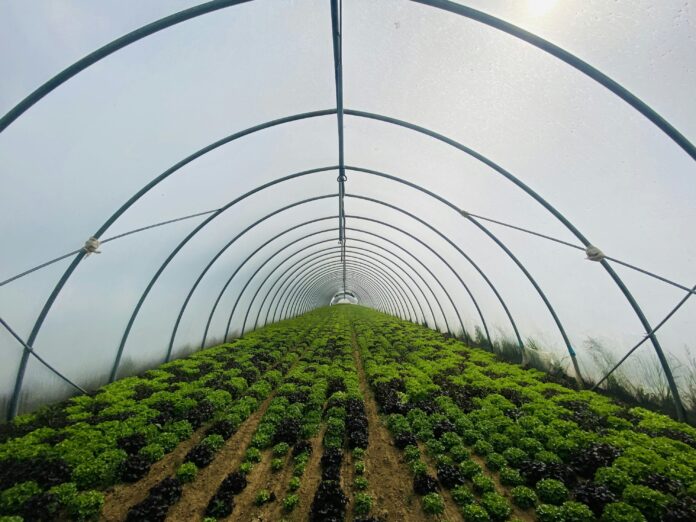The worldwide agricultural panorama is present process a major shift, and on the forefront of this evolution is vertical farming. As conventional farming strategies face growing pressures from local weather change, land shortage, and useful resource limitations, vertical farming emerges as a compelling and more and more viable answer. This revolutionary method to agriculture isn’t just a futuristic idea; it’s a quickly increasing market with the potential to revolutionize how we produce and devour meals. The demand for recent, domestically sourced, and sustainably grown produce is fueling unprecedented development within the vertical farming sector.
Key Takeaways:
- The worldwide marketplace for Vertical Farming Produce is experiencing substantial development, pushed by elements like local weather change and growing demand for sustainable meals sources.
- Technological developments and improvements are making vertical farming extra environment friendly and cost-effective.
- Vertical farming addresses meals safety issues and affords the potential to enhance entry to recent produce in city areas.
- The way forward for vertical farming lies in additional technological integrations and expansions into a greater diversity of crops.
Understanding the Surge: Vertical Farming Produce Market Progress
The speedy development of the Vertical Farming Produce market might be attributed to a number of key elements. Firstly, the growing consciousness of the environmental affect of conventional agriculture has pushed client demand for extra sustainable choices. Standard farming usually includes in depth land use, deforestation, and the overuse of water and pesticides. Vertical farms, however, provide a considerably smaller environmental footprint. They make the most of closed-loop methods that recycle water, reduce pesticide use, and require far much less land in comparison with conventional farms.
Secondly, the results of local weather change are impacting agricultural yields globally. Excessive climate occasions comparable to droughts, floods, and heatwaves are disrupting conventional farming practices and threatening meals safety. Vertical farming, being an indoor and climate-controlled surroundings, affords a buffer in opposition to these exterior elements, guaranteeing a extra steady and predictable crop manufacturing. This predictability is especially vital in areas vulnerable to climate-related agricultural disruptions. The market is seeing an increase in investments as extra individuals need to see Vertical Farming Produce on their grocery store cabinets.
Moreover, the urbanization pattern is concentrating populations in cities, growing the demand for domestically sourced meals. Vertical farms might be situated in city areas, decreasing transportation prices and supply instances, leading to brisker and extra nutritious produce for city shoppers. This proximity additionally permits for a extra direct connection between producers and shoppers, fostering a higher appreciation for the origin and high quality of meals. For us, this implies entry to more healthy and tastier meals choices nearer to residence.
Technological Developments Driving Vertical Farming Produce
The Vertical Farming Produce market’s development is intrinsically linked to developments in expertise. Improvements in LED lighting, hydroponics, aeroponics, and automation are making vertical farms extra environment friendly and cost-effective. LED lighting, for instance, permits growers to customise the sunshine spectrum to optimize plant development and maximize yields. Hydroponic and aeroponic methods, which domesticate vegetation with out soil, considerably scale back water consumption and nutrient waste.
Automation can be enjoying a vital function in optimizing operations. Automated methods can monitor and management environmental elements comparable to temperature, humidity, and nutrient ranges, guaranteeing optimum rising situations. Robotics are getting used to automate duties comparable to planting, harvesting, and packaging, decreasing labor prices and bettering effectivity. These technological integrations aren’t solely bettering the productiveness of vertical farms but additionally making them extra financially viable.
Addressing Meals Safety: Vertical Farming Produce’s Function
One of the compelling arguments for Vertical Farming Produce is its potential to handle world meals safety challenges. Because the world’s inhabitants continues to develop, the demand for meals will enhance exponentially. Conventional agriculture might wrestle to fulfill this demand because of restricted land sources and the affect of local weather change. Vertical farming affords an answer by enabling greater yields in smaller areas and offering a extra managed and predictable rising surroundings.
Vertical farms might be established in areas the place conventional agriculture will not be possible, comparable to deserts, city facilities, or areas with poor soil high quality. This may help to diversify meals manufacturing and scale back reliance on lengthy provide chains, that are susceptible to disruptions. Vertical farming can even enhance entry to recent produce in underserved communities, addressing problems with meals deserts and dietary inequality. As expertise improves, us shoppers will proceed to see improved yields out there.
The Future Outlook: Vertical Farming Produce Enlargement
The way forward for the Vertical Farming Produce market appears promising, with additional growth and diversification anticipated within the coming years. Whereas leafy greens and herbs are at the moment essentially the most generally grown crops in vertical farms, analysis and growth efforts are centered on increasing the vary of crops that may be efficiently cultivated utilizing this methodology. Fruits, greens, and even grains might probably be grown in vertical farms sooner or later, additional growing their affect on the worldwide meals system.
Additional developments in expertise, comparable to synthetic intelligence and machine studying, are anticipated to play a major function in optimizing vertical farm operations. These applied sciences can be utilized to investigate knowledge, predict crop yields, and automate decision-making processes, additional bettering effectivity and decreasing prices. The combination of renewable power sources, comparable to photo voltaic and wind energy, can even assist to scale back the environmental footprint of vertical farms and make them much more sustainable. For us, it’s vital to remain up-to-date with the most recent information relating to the growth of Vertical Farming Produce.


